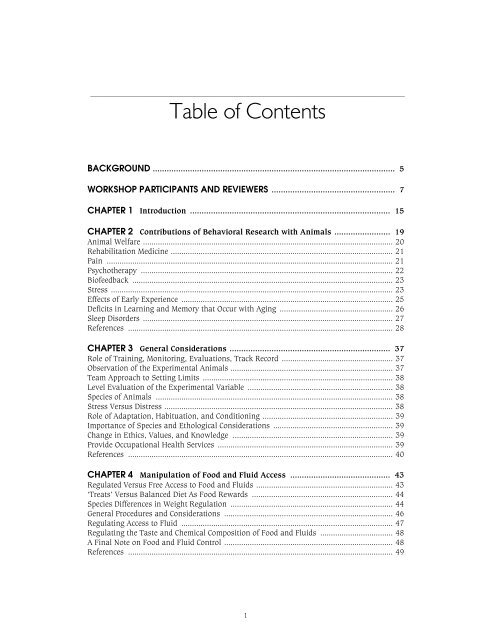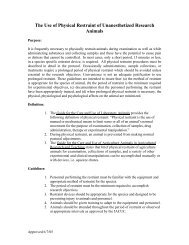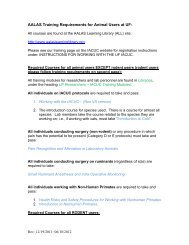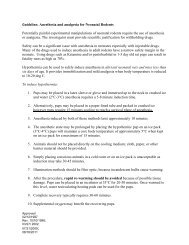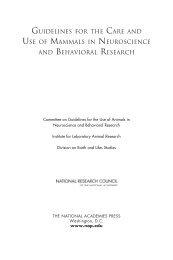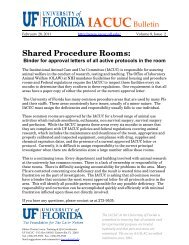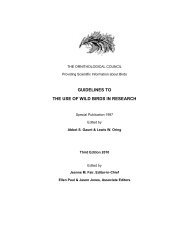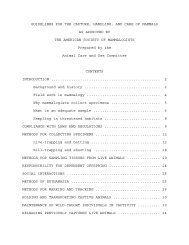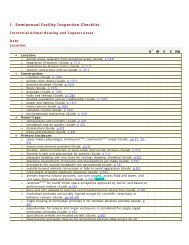Guidelines for Behavioral Research Using Animals - IACUC ...
Guidelines for Behavioral Research Using Animals - IACUC ...
Guidelines for Behavioral Research Using Animals - IACUC ...
You also want an ePaper? Increase the reach of your titles
YUMPU automatically turns print PDFs into web optimized ePapers that Google loves.
_______________________________________________________________________________Table of ContentsBACKGROUND ........................................................................................................ 5WORKSHOP PARTICIPANTS AND REVIEWERS ..................................................... 7CHAPTER 1 Introduction ...................................................................................... 15CHAPTER 2 Contributions of <strong>Behavioral</strong> <strong>Research</strong> with <strong>Animals</strong> ........................ 19Animal Welfare ..................................................................................................................... 20Rehabilitation Medicine ........................................................................................................ 21Pain ...................................................................................................................................... 21Psychotherapy ...................................................................................................................... 22Biofeedback .......................................................................................................................... 23Stress .................................................................................................................................... 23Effects of Early Experience ................................................................................................... 25Deficits in Learning and Memory that Occur with Aging ..................................................... 26Sleep Disorders ..................................................................................................................... 27References ............................................................................................................................ 28CHAPTER 3 General Considerations ..................................................................... 37Role of Training, Monitoring, Evaluations, Track Record .................................................... 37Observation of the Experimental <strong>Animals</strong> ............................................................................ 37Team Approach to Setting Limits ......................................................................................... 38Level Evaluation of the Experimental Variable .................................................................... 38Species of <strong>Animals</strong> ............................................................................................................... 38Stress Versus Distress ........................................................................................................... 38Role of Adaptation, Habituation, and Conditioning ............................................................. 39Importance of Species and Ethological Considerations ........................................................ 39Change in Ethics, Values, and Knowledge ........................................................................... 39Provide Occupational Health Services .................................................................................. 39References ............................................................................................................................ 40CHAPTER 4 Manipulation of Food and Fluid Access ........................................... 43Regulated Versus Free Access to Food and Fluids ................................................................ 43‘Treats’ Versus Balanced Diet As Food Rewards .................................................................. 44Species Differences in Weight Regulation ............................................................................ 44General Procedures and Considerations ............................................................................... 46Regulating Access to Fluid ................................................................................................... 47Regulating the Taste and Chemical Composition of Food and Fluids .................................. 48A Final Note on Food and Fluid Control ............................................................................... 48References ............................................................................................................................ 491


